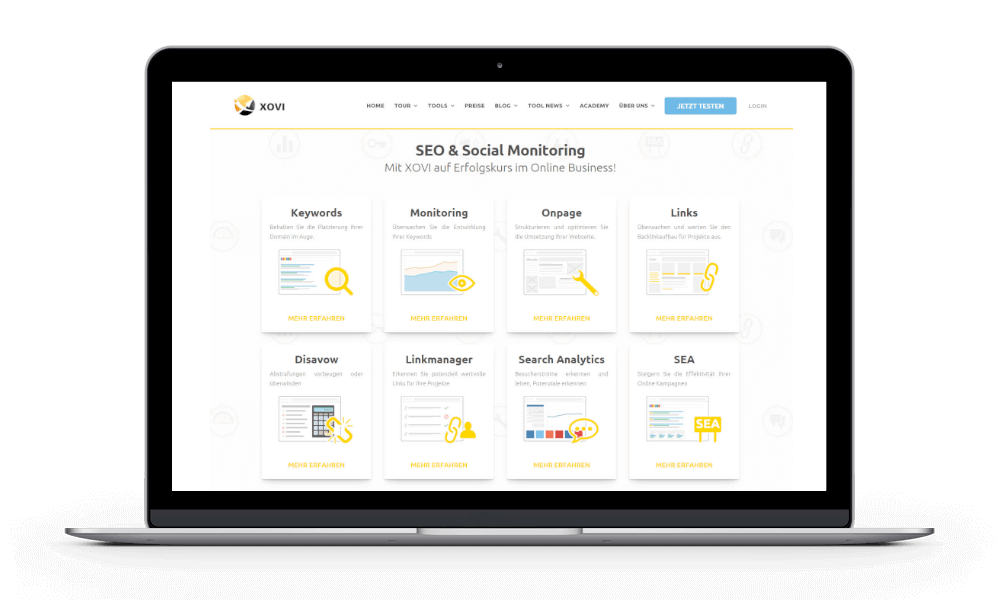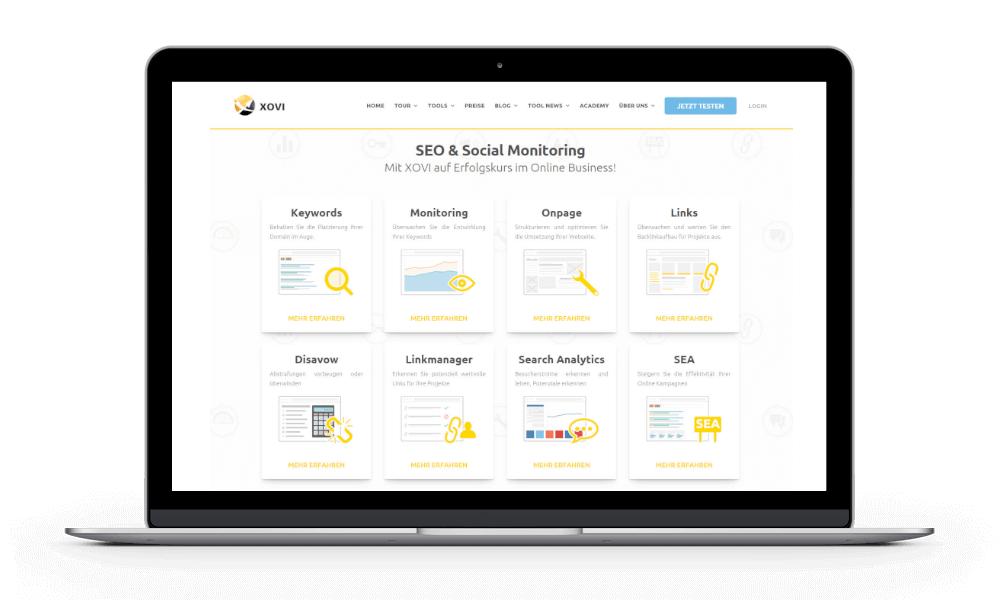SEO MONITORING
MONITORING IS AN ESSENTIAL PART OF SEARCH ENGINE MARKETING.
Monitoring could freely be interpreted as “observing”. It implies the monitoring of websites, for example with regard to their accessibility or their position within the results lists of search engines. Monitoring is considered one of the most important tools of a search engine optimizer because it is indispensable to know where you are with a website or how the ranking is developing.
In connection with SEO, monitoring means constantly supervising search engine optimization activities. This involves checking how successfully an optimized website is developing. Through continuous monitoring, the efficiency of the optimization measures becomes transparent. It can be determined whether the individual measures are effective, neutral, or cause damage.
Creating a clear overview can be challenging due to the numerous details involved. Professional tools are utilized to monitor various factors, evaluate them, and present them in clear and appropriate reports. Regular monitoring can also indicate the beginnings of a so-called slow death early on, as well as measures to prevent it.

MONITORING TYPES
THE FOLLOWING TYPES OF MONITORING ARE RELEVANT:
Update monitoring observes the frequency of search engine robot visits, which check one's website for up-to-dateness.If there are many checks, it means that there are likely significant updates to one's address and it is currently a relevant topic.
Backlink monitoring refers to tracking backlinks pointing to one's domain and to individual addresses of the web presence. For example, the link power is checked and related to the respective link texts.
Monitoring social bookmarks and social media is becoming increasingly important for companies' online presence. This involves monitoring one's offering within social networks such as Facebook, Instagram, or Google Plus. A broad and positive response in such networks promotes the company's online reputation.
MONITORING TYPES
THE FOLLOWING TYPES ARE RELEVANT:
With position monitoring, a list of keywords and keyword combinations is available for each own web address, which have been selected and are used for search engine optimization. This involves monitoring how the absolute positioning with search engines behaves in contrast to the relative positioning, i.e. that of the respective competitor.
Update monitoring monitors the frequency of search engine robot visits, which check one's own website for up-to-dateness. If there is a high value for the number of checks, this indicates a high degree of topicality and changes to one's own address.
Backlink monitoring refers to the monitoring of backlinks pointing to one's own domain as well as to individual addresses of the web presence. For example, the link power is checked and related to the respective link texts.
The monitoring of social bookmarks and social media is becoming increasingly important for companies. This involves monitoring one's own offering within social networks such as Facebook, Instagram or Google Plus. A broad and positive response in such networks promotes the online reputation of the own company.
With position monitoring, a list of keywords and keyword combinations is available for each own web address, which have been selected and are used for search engine optimization. This involves monitoring how the absolute positioning with search engines behaves in contrast to the relative positioning, i.e. that of the respective competitor.
Update monitoring monitors the frequency of search engine robot visits, which check one's own website for up-to-dateness. If there is a high value for the number of checks, this indicates a high degree of topicality and changes to one's own address.
Backlink monitoring refers to the monitoring of backlinks pointing to one's own domain as well as to individual addresses of the web presence. For example, the link power is checked and related to the respective link texts.
The monitoring of social bookmarks and social media is becoming increasingly important for companies. This involves monitoring one's own offering within social networks such as Facebook, Instagram or Google Plus. A broad and positive response in such networks promotes the online reputation of the own company.












